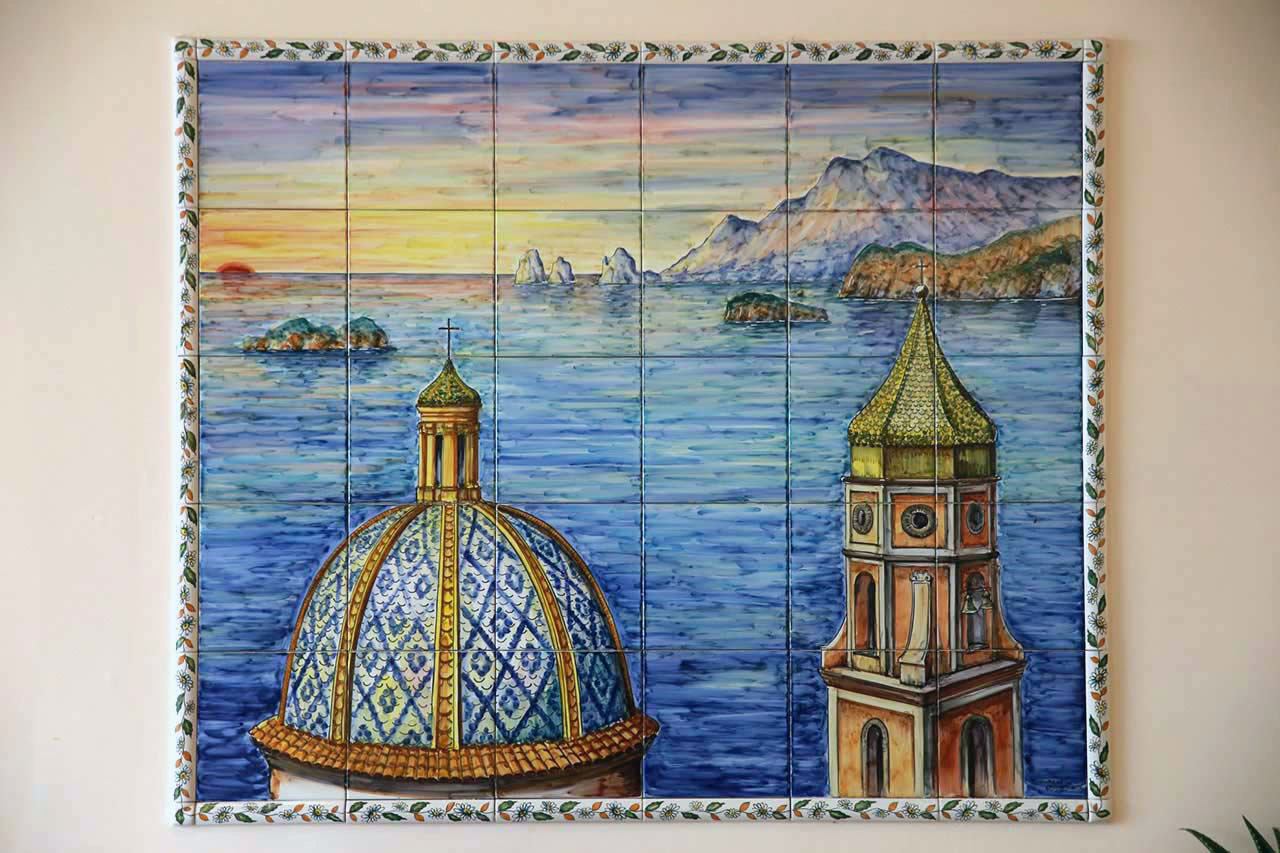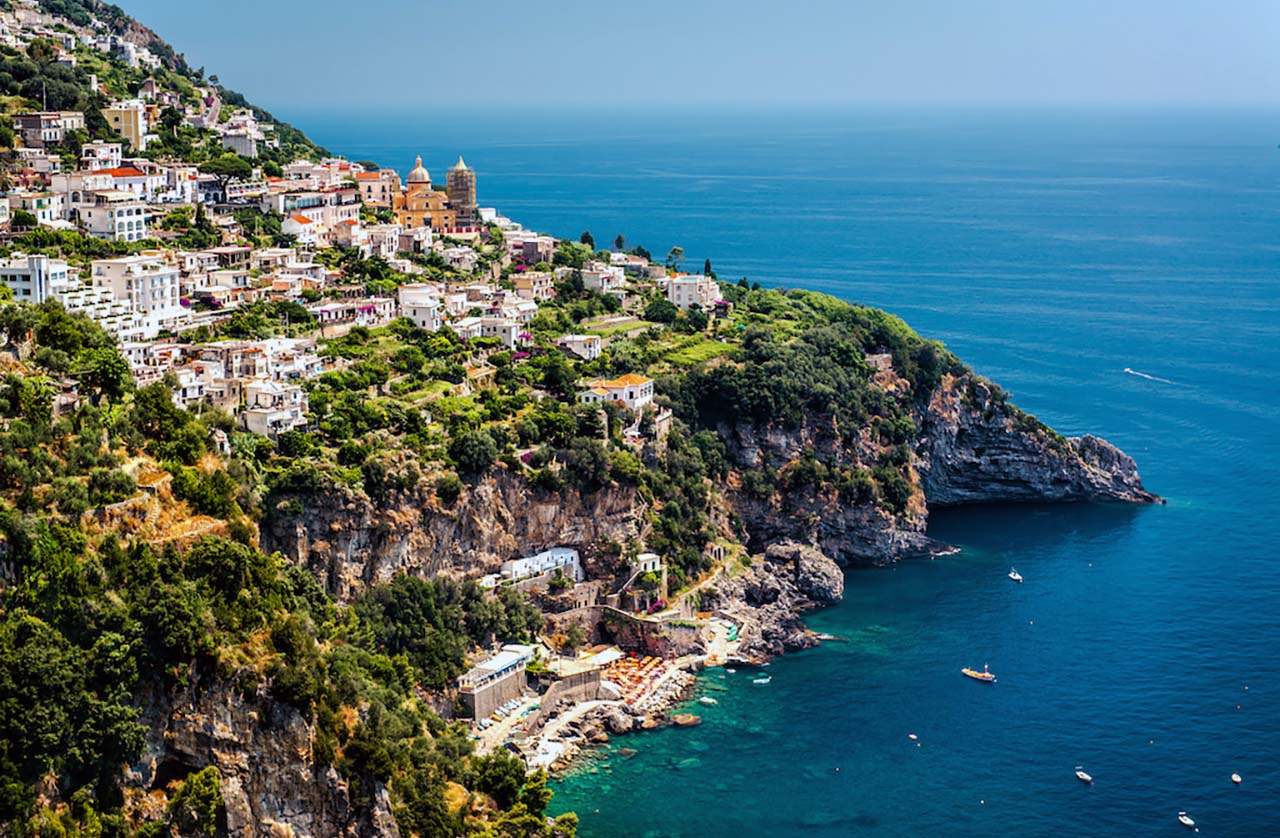This fishermen’s village teaches the secrets of hospitality, kindness, and finding pleasure in life
October 1st, 2020. By Anna Volpicelli
«I’m going to Praiano to breathe some positive energy.» It’s the koan that each Amalfi Coast resident knows by heart and has reflected upon for a lifetime. In this old fishermen’s village, a person can breathe in calm and friendliness.
«It’s easier to find a feeling of home in Praiano than in any other city on the Amalfi Coast. The genuine and relaxed atmosphere can pull anyone into a dimension of pure positivity,» says Giacomo Miola, founder of Gastronomic Trekking, a start-up specializing in gastronomic tours of the Amalfi Coast
The importance of sharing
Even though it is located between Amalfi and Positano, Praiano exists outside the mass tourism circuit. The old village (divided into two areas known as Praiano, east side, and Vettica, west side) has managed to keep the friendly and relaxed hospitality approach once so typical of the region.
While strolling along Masa Street, it’s indeed not uncommon to come across elders eager to offer you examples of the local food traditions. «It’s widespread here that if someone sees you walking by a couple of times, at the third sighting, they will approach offering you something to eat from their vegetable garden or a dish they had just cooked,» says Miola.

Devotion to the area
Praiano comes from the Greek word Pelagianum, which means the open sea. «You can see the sea from each house. We are open to infinity,» says Suela Cimino, the owner of Hotel Margherita. And it is true since the village offers this majestic view from every corner.
«From Praiano, you can see to Salerno Bay, and when the sky is clear, you can even catch Licosa in Cilento,» says Miola. While walking around these narrow streets flanked by pastel-colored houses, you will surely come across the well-known wayside shrines. The roads are dressed-up with small altars decorated with maiolica, built by families seeking protection and blessings.
Usually, the shrines display religious images of Saints and The Virgin Mary: signs of local devotion, faith, and attachment to the land. The maiolica is a distinctive symbol of the Amalfi Coast and embellishes both public and private spaces, including houses, billboards, and even pavements in and around the cities. You’ll recognize its colors and techniques in the decorative touches on the Church of Saint Luke the Evangelist’s dome and the routes that lead to the Monastery of Saint Domenic, located in the Vallata di Campo.
Open-air museum
The routes that lead to this sacred place cross with the popular Path of the Gods. Eight different types of strolls are combined in the NaturArte itinerary. An open-air museum launched in 2016. This project was brought to life by eight celebrated local artists specializing in pottery that adorned the paths and the streets with 150 sculptures.
They aimed to design and show an art path that would underscore the strong connection between the environment, traditional practices, and local culture. According to Omero, ancient Greek Gods once walked along these paths to save Odysseus from the sirens of the Sirenusas islands as they traveled back to Ithaca.

Sunset time
It is also the perfect place to linger and admire the changing seasons: leaves turning to red, gold, or green, colorful flowers and wild herbs (such as wild fennel), and, of course, the vast, deep blue sea. Here it is possible to contemplate this beauty in sacred silence while walking around the Church of Saint Mary, which stands at the height of 364 m. above sea level.
Moreover, before reaching the end of the route, you will encounter the Monastery of Saint Domenic, one of the most evocative places in the area, where you can take time to think as you admire the sunset. «Waiting for the sunset is one of the main reasons people come to Praiano,» says Suela. Worldwide travelers have adopted this sacred ritual and gathered to watch the sun go down while experiencing the peace and mercy left by the ancient deities.
(Translation by Michela Pandolfi)

